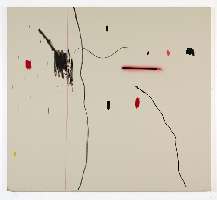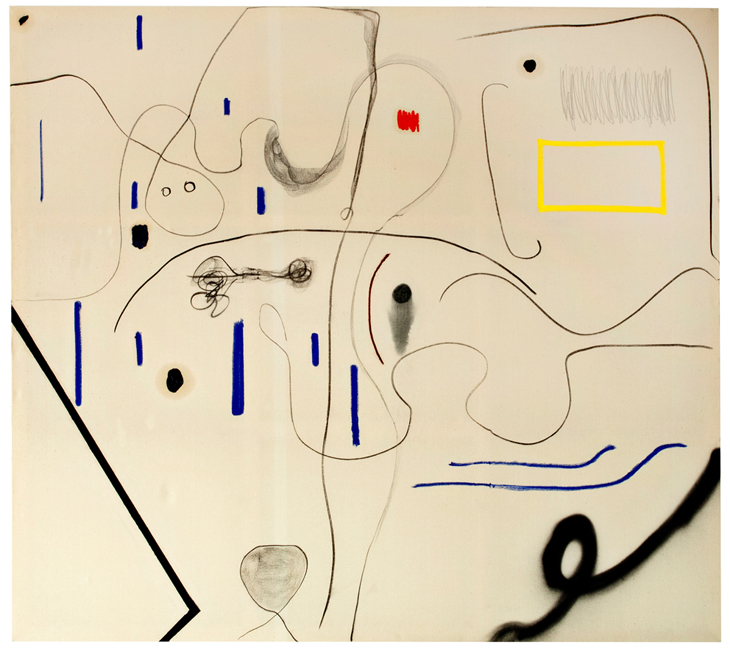

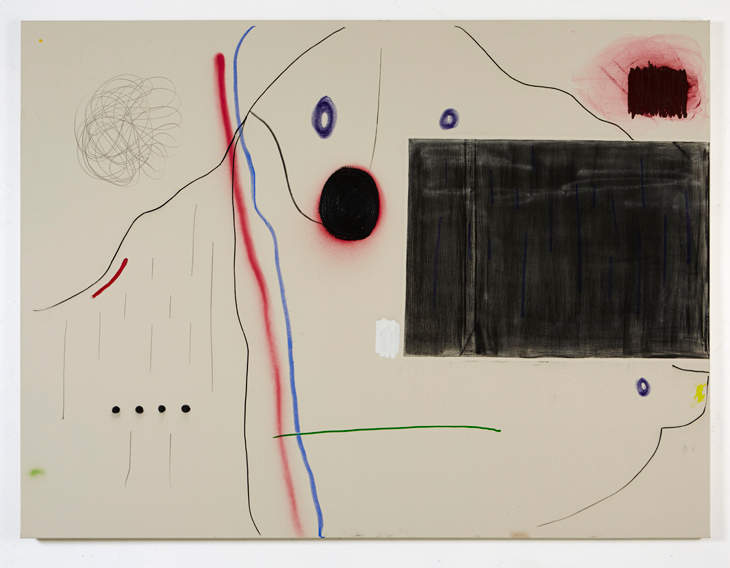
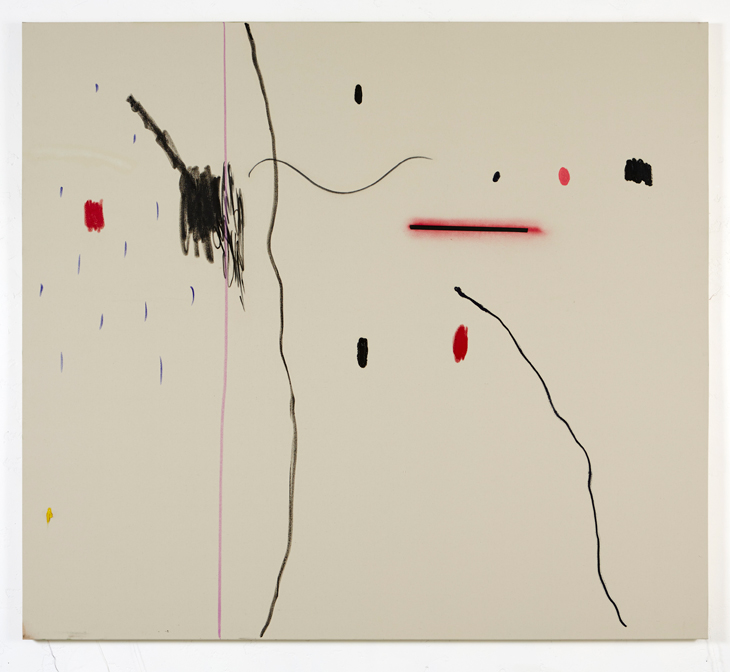
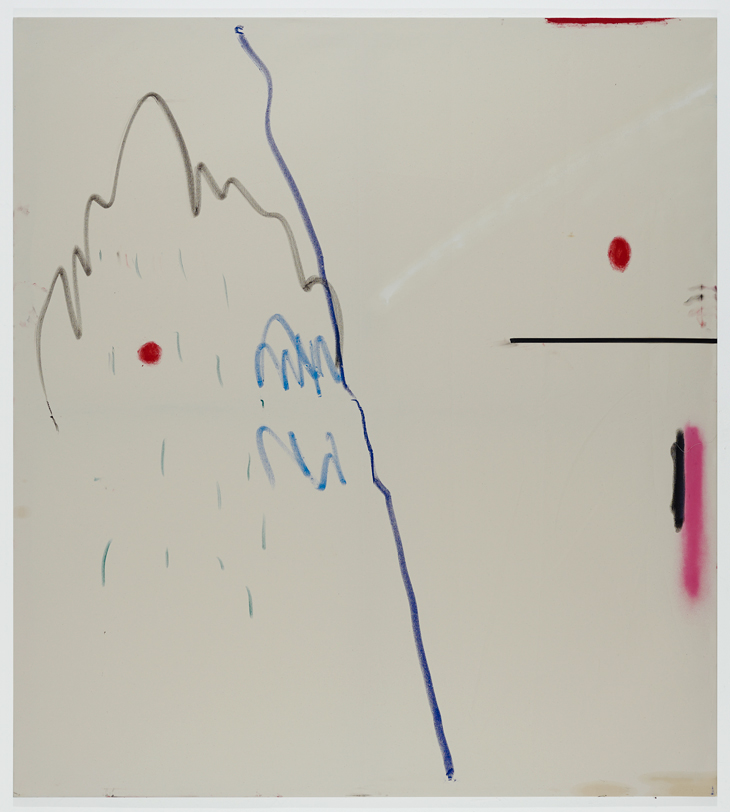
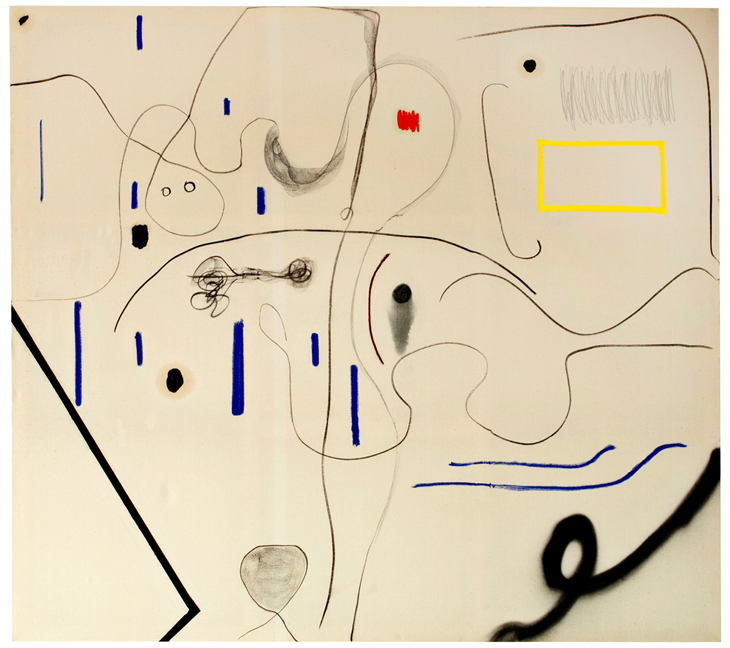
Christian Rosa
The founder of abstraction Wassily Kandinsky advocated for a non-objective art that would not merely represent the world but turn inside the mind to express subjective experiences. Having learnt music before painting, the Russian painter and theorist aspired to transfer the unmediated power of sound to the creation of an emotional visuality. His expression ‘Each colour lives by its mysterious life’ constitutes one of the core strategies of his personal path in painting. Furthermore, his was a fundamental contribution to the perception of the art experience, closer to the spiritual than to intellectual engagement.
Such is the experience proposed by Christian Rosa. Employing pencil, spray and oil paint, the physical actions that the artist executes in front of his large canvases create an abstract pictorial universe that allows colour and form to live by their own mystery. Furthermore, as if to enhance the sense of submission of the will in the process of painting, he incorporates mistakes as potential points of departure of further visual configurations. The evolution of his lyrical abstract images is thus determined by chance and an instinctive trust of the energy contained in physical motion and failure. The result is an ensemble of subtle planes and lines sketched in primary colours surrounded by gestural pencil drawn paths that suggest natural forms such as faces, raindrops or body parts. The interaction of these elements with the white background renders a meditative space where calligraphic scrawling is punctuated by tiny furtive fires emitting their incandescence.Avoiding the preconceived compositional drive that generally rules the painting act, the artist lets his body become the primary vehicle for an automatic writing of sorts, where the images are generated as in a chance-based exquisite corpse.
Text © Gabriela Salgado

